Ayurveda
Introduction to Ayurveda
Ayurveda, from India, the land of spices, dates back thousands of years. This ancient system of treating people came after many trials and is still prevalent in the country today. Ayurveda is an excellent system for treating and solving any kind of problem in our body mentally and physically.
Some of the best Ayurvedic hospitals in India like Mansarovar Ayurvedic Medical College teach students many treatments and procedures. These students graduate and serve as Ayurvedic practitioners. Let us read some of the popular or common treatments offered by them.
The Most Common Ayurvedic Treatment In India
There are numerous Ayurvedic treatments in India. Depending on the patient's illness and ultimate goal, the list of services will vary. Some common types of treatment in Ayurveda are listed below.
Diet
The first and most common Ayurvedic treatment many people choose is their diet. An Ayurvedic diet, to be precise, is designed according to one's doshas, how imbalanced they are, and what one's ultimate goals are. In general, experts recommend including seasonal whole fruits and vegetables to get the most nutritional benefits. Herbs and spices are also recommended but only in combination with certain foods. There are also foods that won't bring the most benefits to avoid. Along with a complete diet plan, Ayurvedic doctors also recommend when and what exercises to do along with meditation.
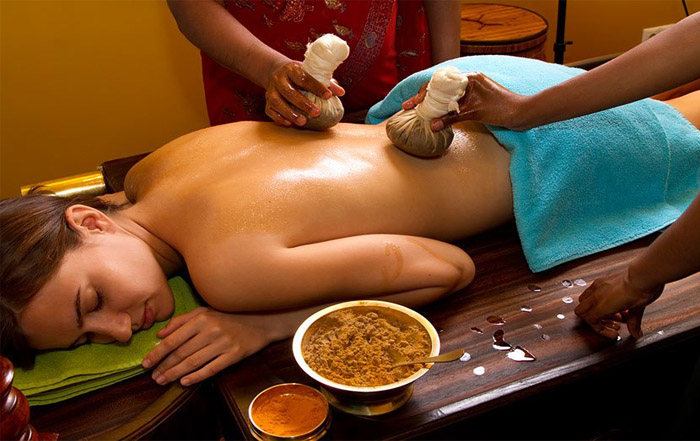
Ayurvedic massage
Abhyanga refers to Ayurvedic massage. This massage is meant to soothe the body and mind while also helping the skin. This is a full body Ayurvedic treatment that involves massaging the entire body from head to toe. The massage process with proper pressure is intentional with the aim of helping the blood flow in the body. The whole massage lasts about 5 to 15 minutes after which the person relaxes and then takes a warm bath. Generally, the massage is done in a well-ventilated warm place. Another part of Abhyanga is the oil used in the massage. Different oils are used for different parts of the body.
Panchakarma
Among all the common Ayurvedic remedies, most people are aware of Panchakarma. Pancha meaning five refers to the five different actions performed as part of the treatment. Panchakarma seeks to remove all the waste from the body and at the same time purify and eliminate the body. A pre-purification is the stage where the body is massaged in preparation for the treatment. Thereafter, the patient undergoes Vamana or induced vomiting, Virechana or purgation, Basti or enema, Nasya or nasal treatment and Rakta Mosakha or blood purification. Each of these treatments is also individualized and described in more detail.
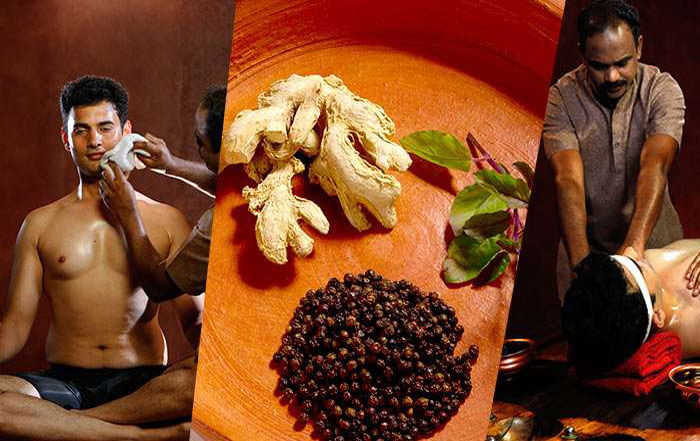
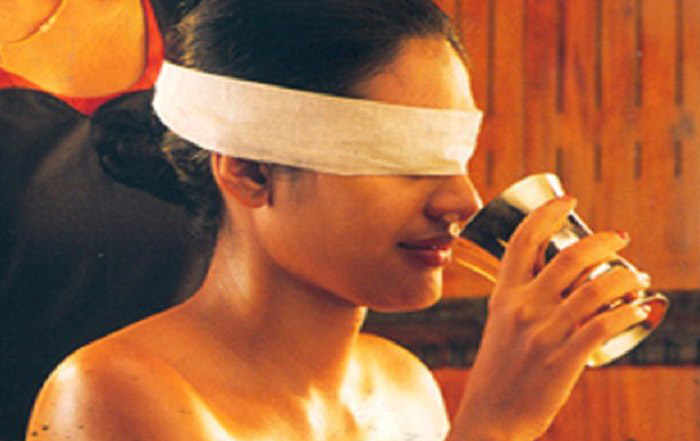
Vamana
Vamana or medically induced vomiting may seem scary at first but has many benefits. The focus is on removing excess kapha dosha from the upper respiratory tract of the body. Patients with sinus problems, asthma and certain skin disorders are recommended for this treatment. After the pre-treatment, the patient is seated in a comfortable position and is given a mixture of medicinal herbs. This mixture initiates the vomiting process and cleanses the body. Vomiting stops after the entire drug has left the body.
Snehavasti
Snehavasti or enema helps to remove waste from our intestines. Our intestines take time to eliminate this waste due to wear and tear over time. When accumulation occurs, in the list of Ayurvedic treatments, Snehavasti is recommended. A medicated fatty oil like ghee is used on a patient who has just had a meal. The oil is injected into the rectum with constant pressure. The oil will lubricate and flush out uniformly with the waste material. Vata Dosha is balanced with this remedy and patients also witness better digestion.
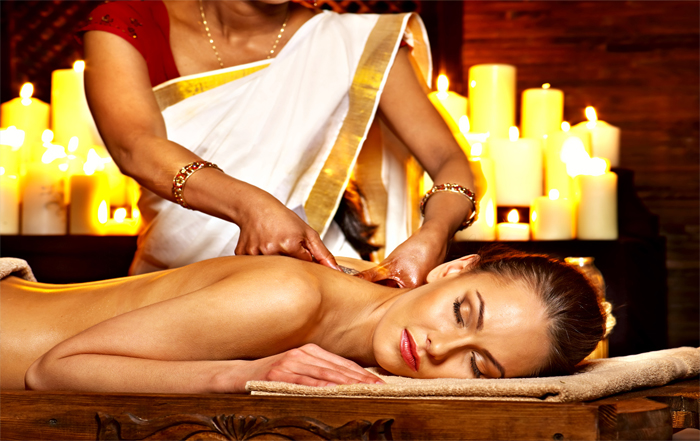
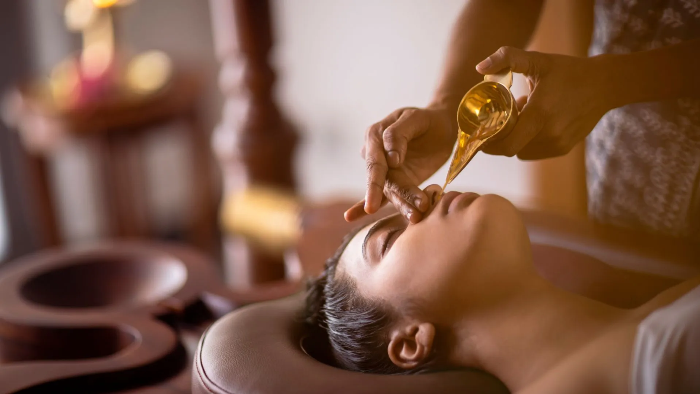
Nasyam
Nasyam refers to the process of treating the nose. Usually, the treatment is an oil and the treatment is recommended for people who have stuffy or congested noses. Other side effects like migraine and headache are also relieved in the process. Patients have clean sinuses and less mucus. The oil is taken on the finger and diffused into the inside of the nostrils. With the head tilted, it takes some time for the patient to inhale the oil and diffuse it into the nasal membranes, usually 5 to 10 minutes. Nasyam is usually performed in the colder months.
Shirodhara
Snehavasti or enema helps to remove waste from our intestines. Our intestines take time to eliminate this waste due to wear and tear over time. When accumulation occurs, in the list of Ayurvedic treatments, Snehavasti is recommended. A medicated fatty oil like ghee is used on a patient who has just had a meal. The oil is injected into the rectum with constant pressure. The oil will lubricate and flush out uniformly with the waste material. Vata Dosha is balanced with this remedy and patients also witness better digestion.
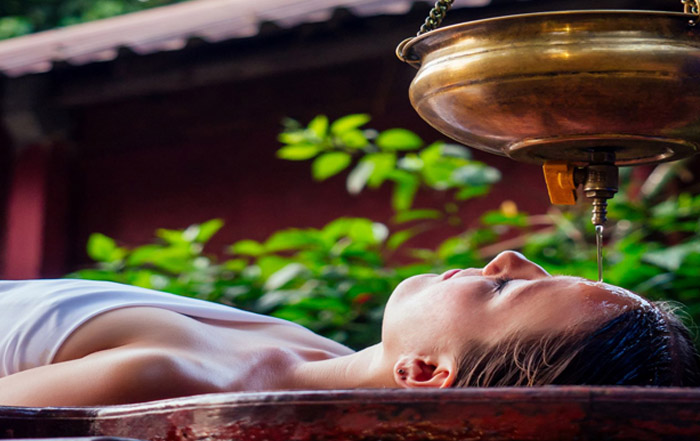
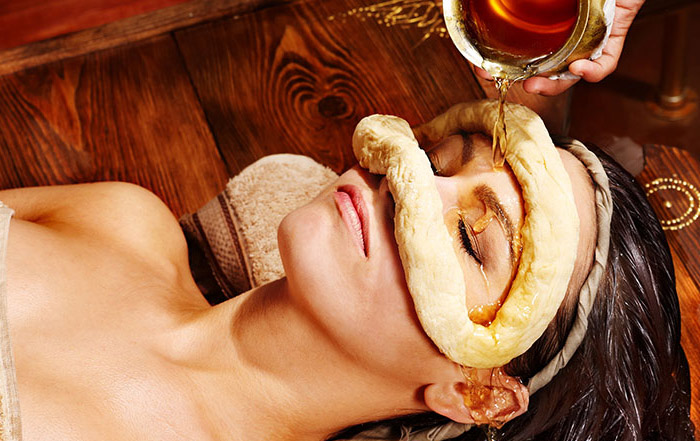
Tharpanam
Ayurvedic beauty treatments are very popular for being natural and soothing. Tharpanam for eyes is one such treatment. Today everyone is glued to a digital screen, be it for work or otherwise. This puts a lot of strain on our eyes. To relax them, tharapanam is done. To begin with, a mixture of dough is made around the eyes and then put into the medicine. As the oil or treatment is infused, the patient is asked to close and open their eyes several times. Ghee commonly used for this treatment stimulates the optic nerve.
Putpakam
After the treatment of Tharpanam is completed, Puthapakam is treated. It is done to remove any residue of ghee from the skin. This treatment is done using herbal juices and rejuvenates the patient while removing the heaviness induced by the use of ghee. Absorption of ghee is necessary for the above remedies, but its excessive use is harmful. This is where Putpakam comes in.
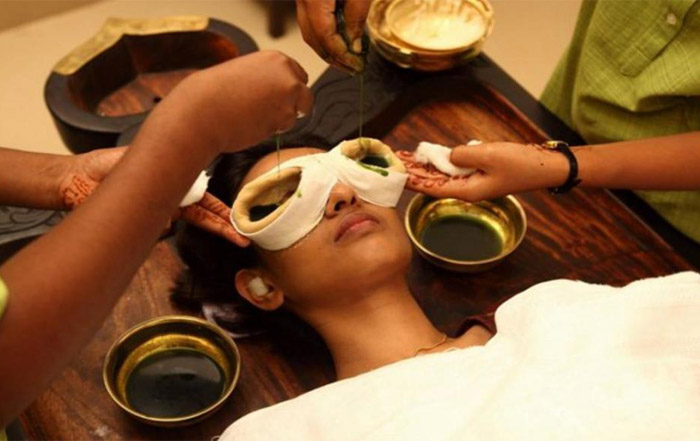
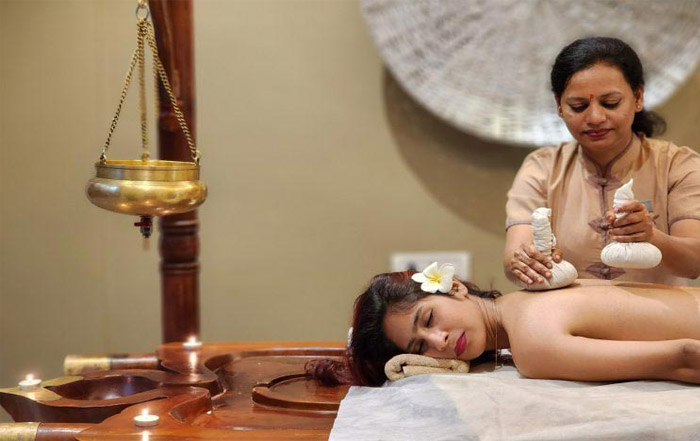
Virechanam
To wrap up our list of the most common Ayurvedic treatments we have Virechanam or induced cleansing. Our body goes through a lot during the day. With so many different processes going on, there is bound to be buildup and blockages. This means that nutrients cannot be absorbed properly. Virechanam is a deep cleansing treatment for the digestive system that is tailored for each patient. Early in the morning, the patient is treated and then the evacuation process begins.
